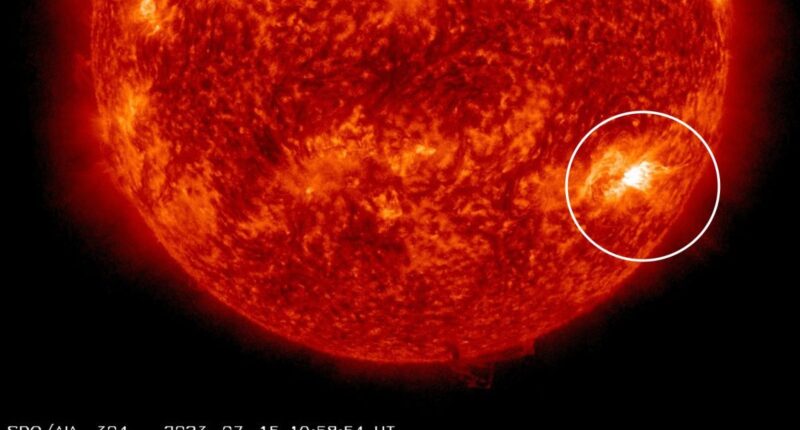EXPERTS have revealed that a massive coronal mass ejection is crashing into Earth’s atmosphere today.
CMEs are intense eruptions of charged particles from the Sun’s upper atmosphere or Corona.
Experts revealed that this large CME is the derivation of two smaller CMEs “cannibalizing” each other.
Cannibalizing CMEs is a common occurrence and describes when the Sun launches two CME eruptions within a short period.
The first CME came from the sun on July 14, alongside a dark eruption from Sunspot AR3370, per Spaceweather.com.
Live Science describes a dark eruption as a “solar flare containing unusually cool plasma that makes it look like a dark wave.”
Shortly after the first CME erupted, a second, faster one was launched on July 15 from Sunspot AR3363.
Both CMEs derived from C-class solar flares, which describe mid-tier solar eruption strength.
However, due to their combined size and speed, this will likely result in a level G1 or G2 geomagnetic storm.
WHAT’S A GEOMAGNETIC STORM?
Geomagnetic storms are defined as “a disturbance of Earth’s magnetosphere that occurs when there is a very efficient exchange of energy from the solar wind into the space environment surrounding Earth,” per NOAA.
Most read in News Tech
“These [events] result from variations in the solar wind that produces major changes in the currents, plasmas, and fields in Earth’s magnetosphere.”
G1 classification is considered weak and can result in minor degradation of high-frequency radio communication and occasional loss of radio contact.
Category G2 storms are slightly stronger and could include limited blackout of high radio communication and loss of radio contact for tens of minutes.
Neither G1 nor G2 geomagnetic storms can harm humans on Earth.









